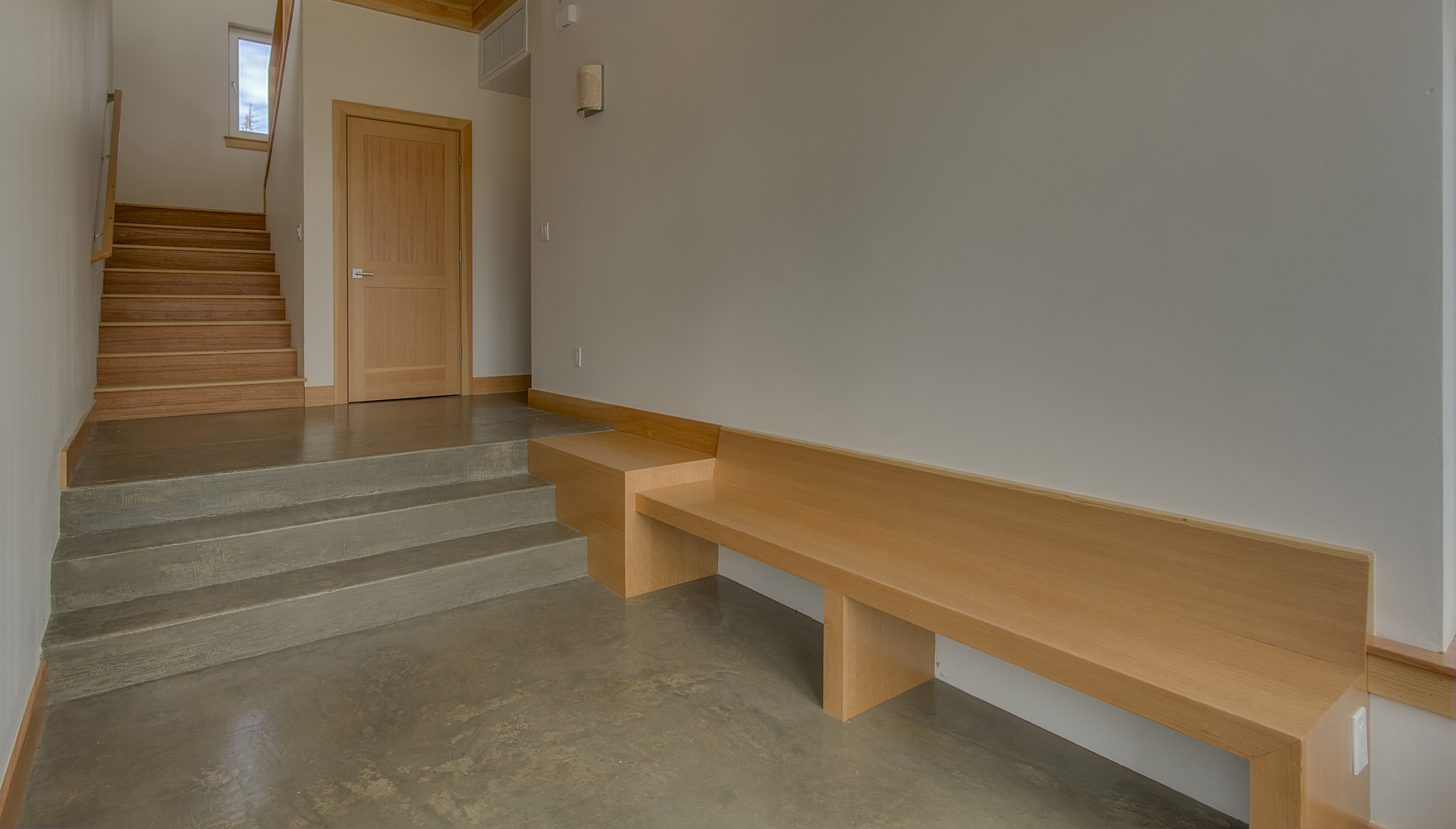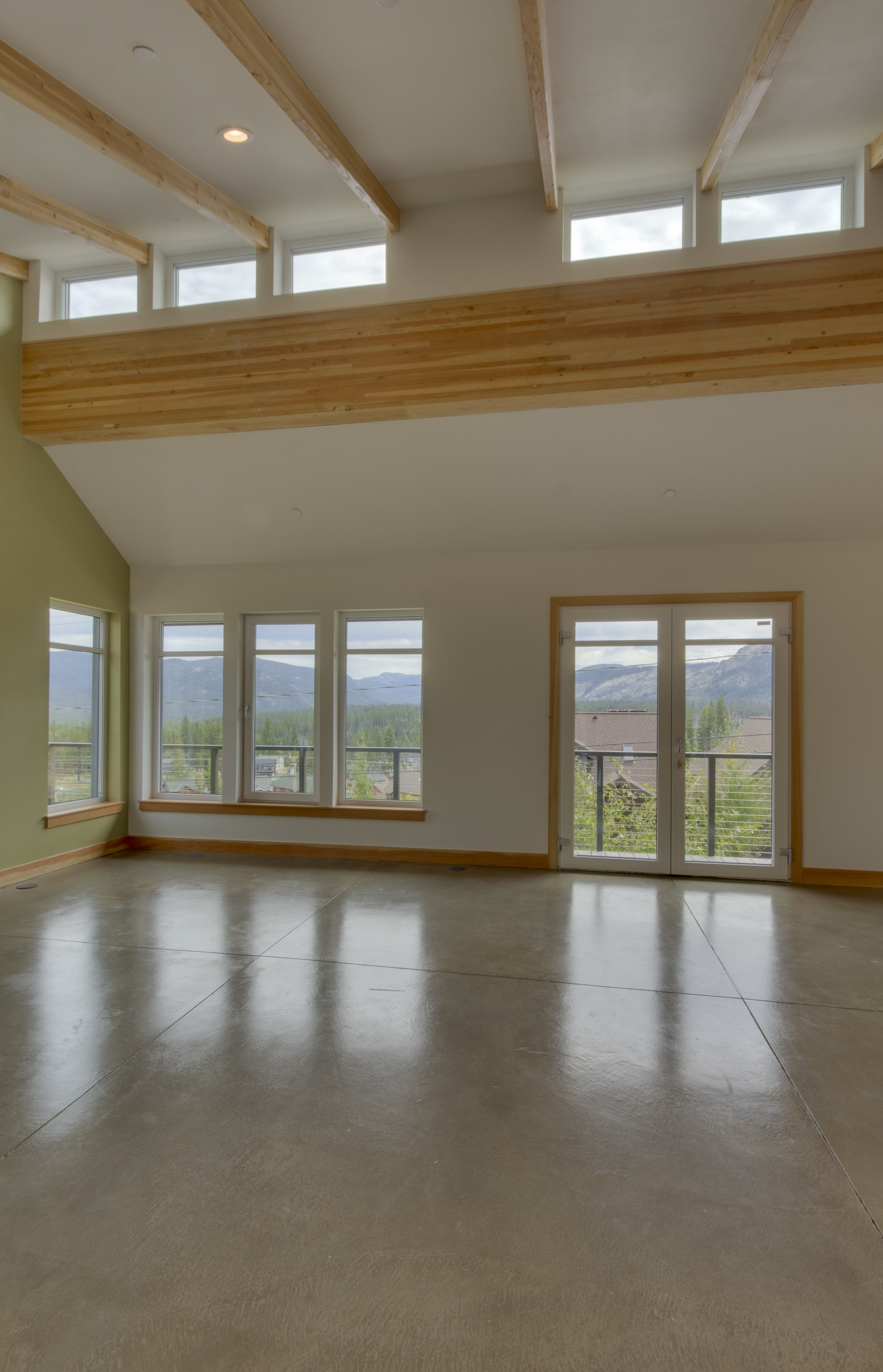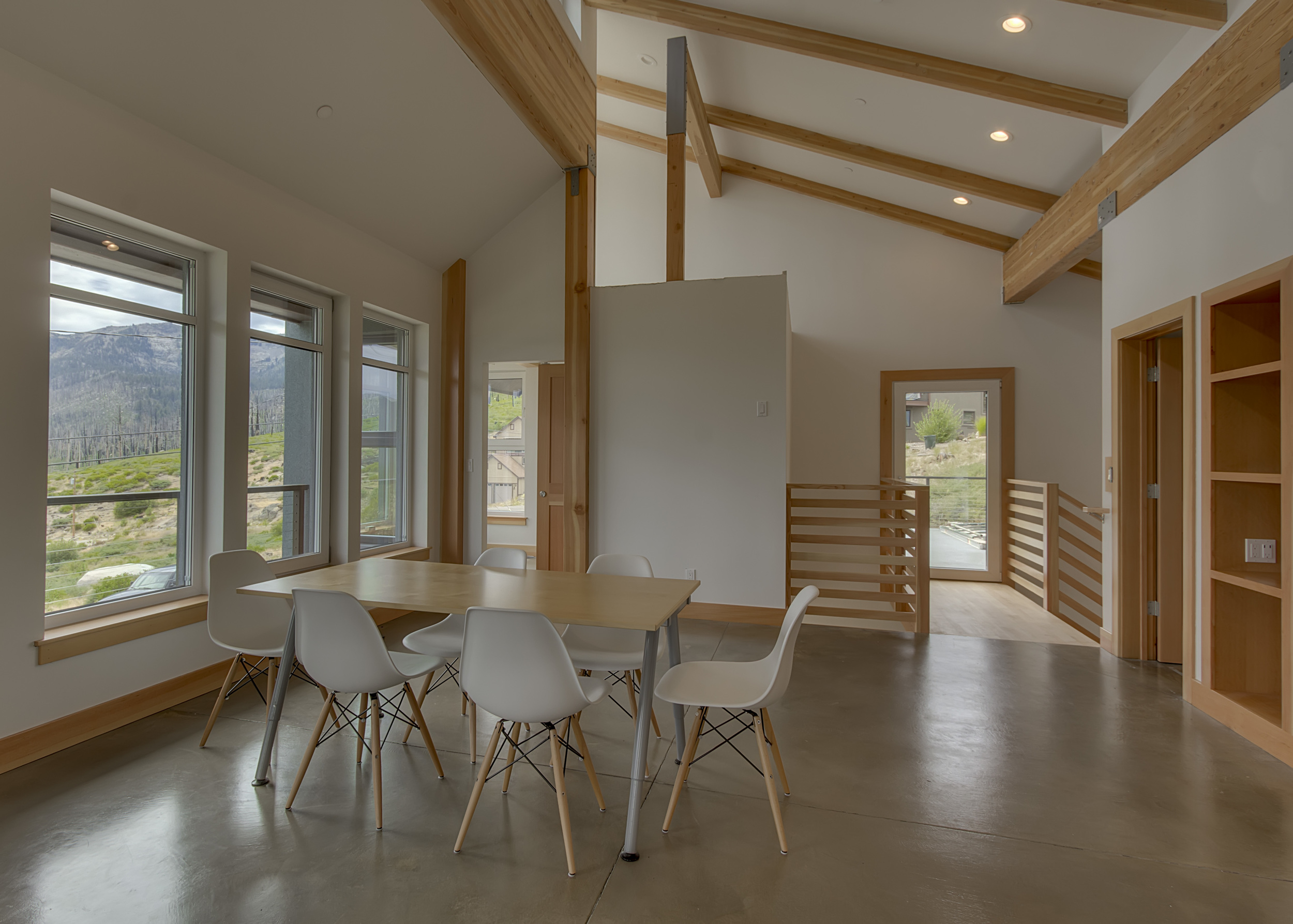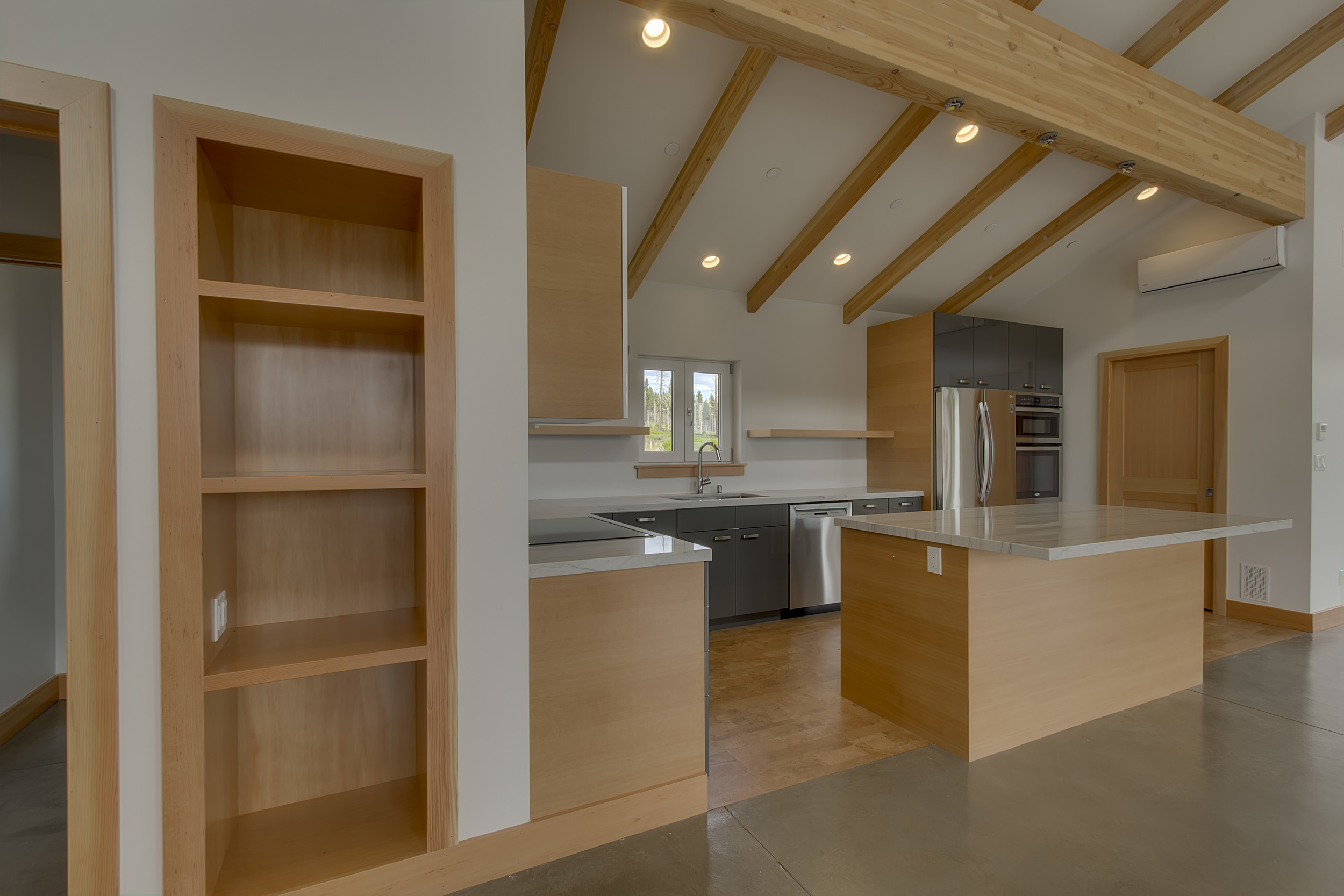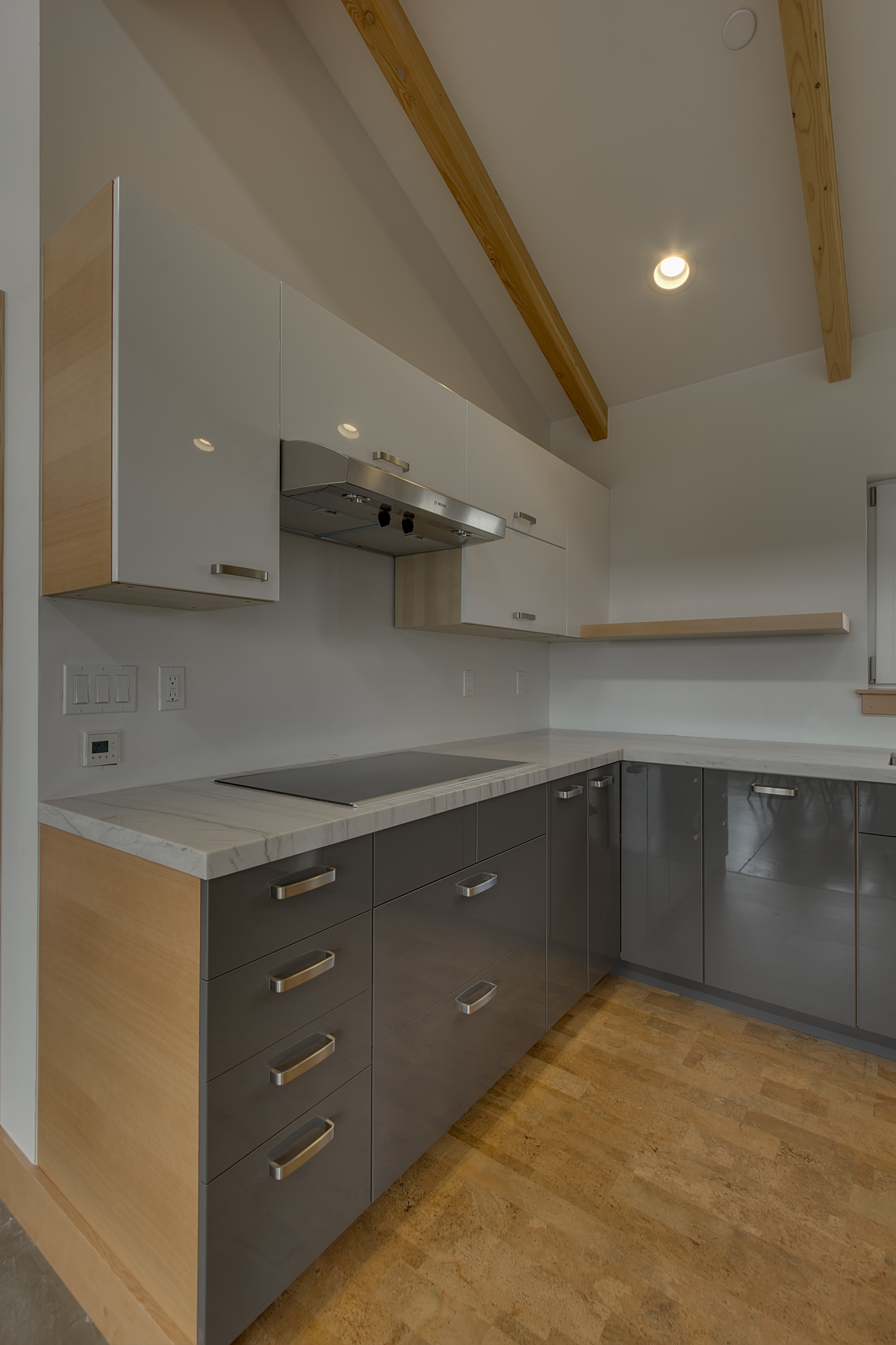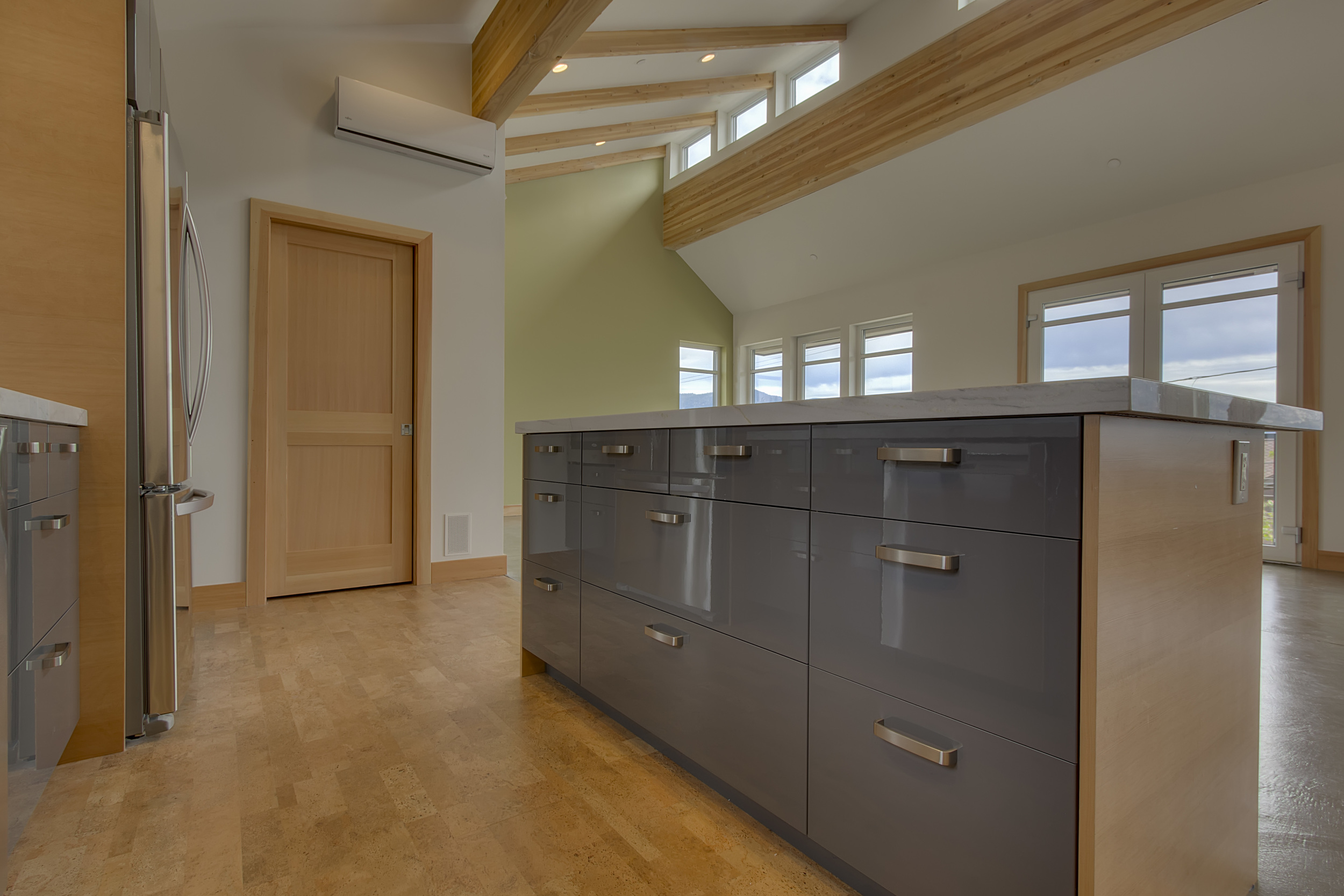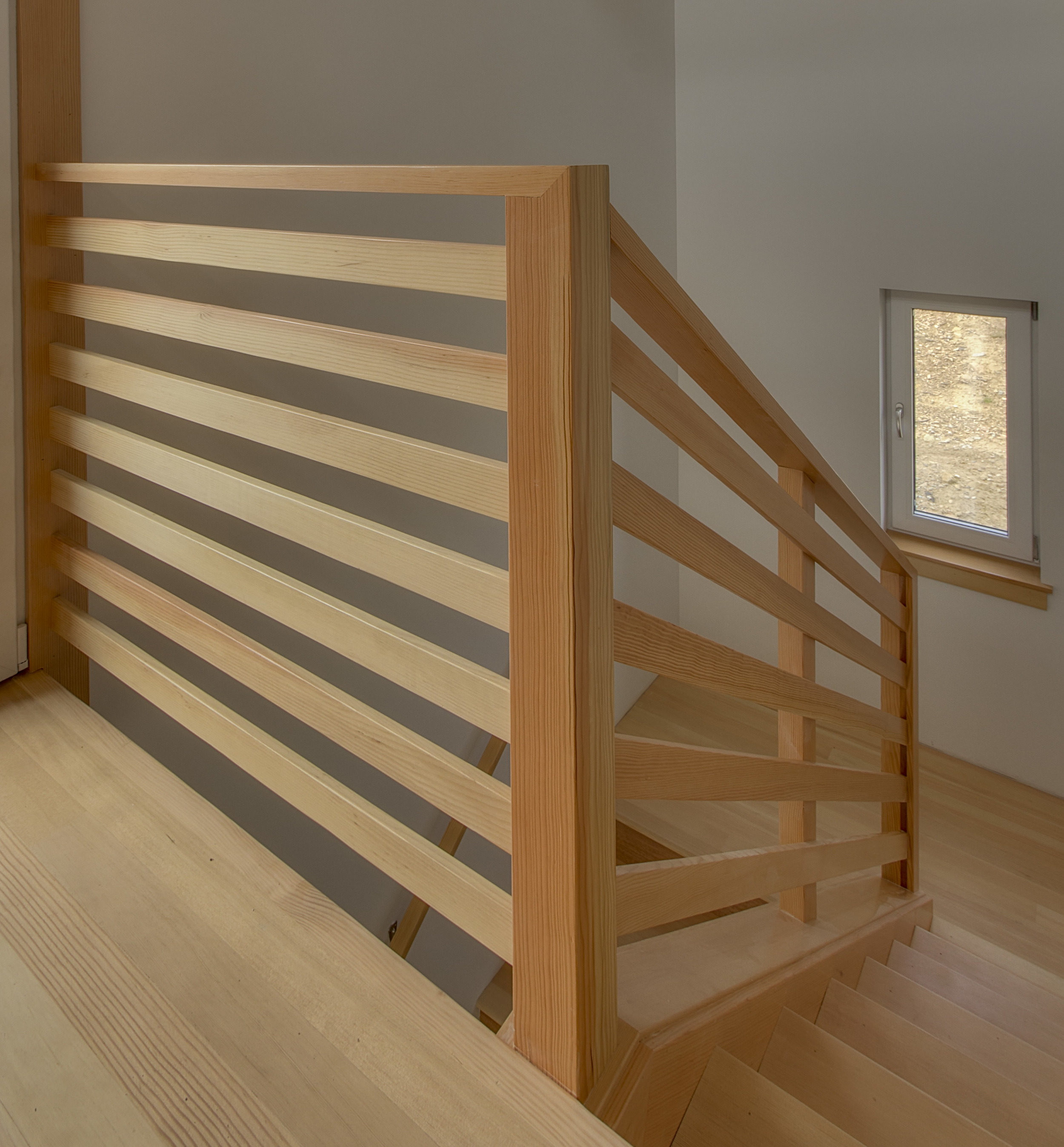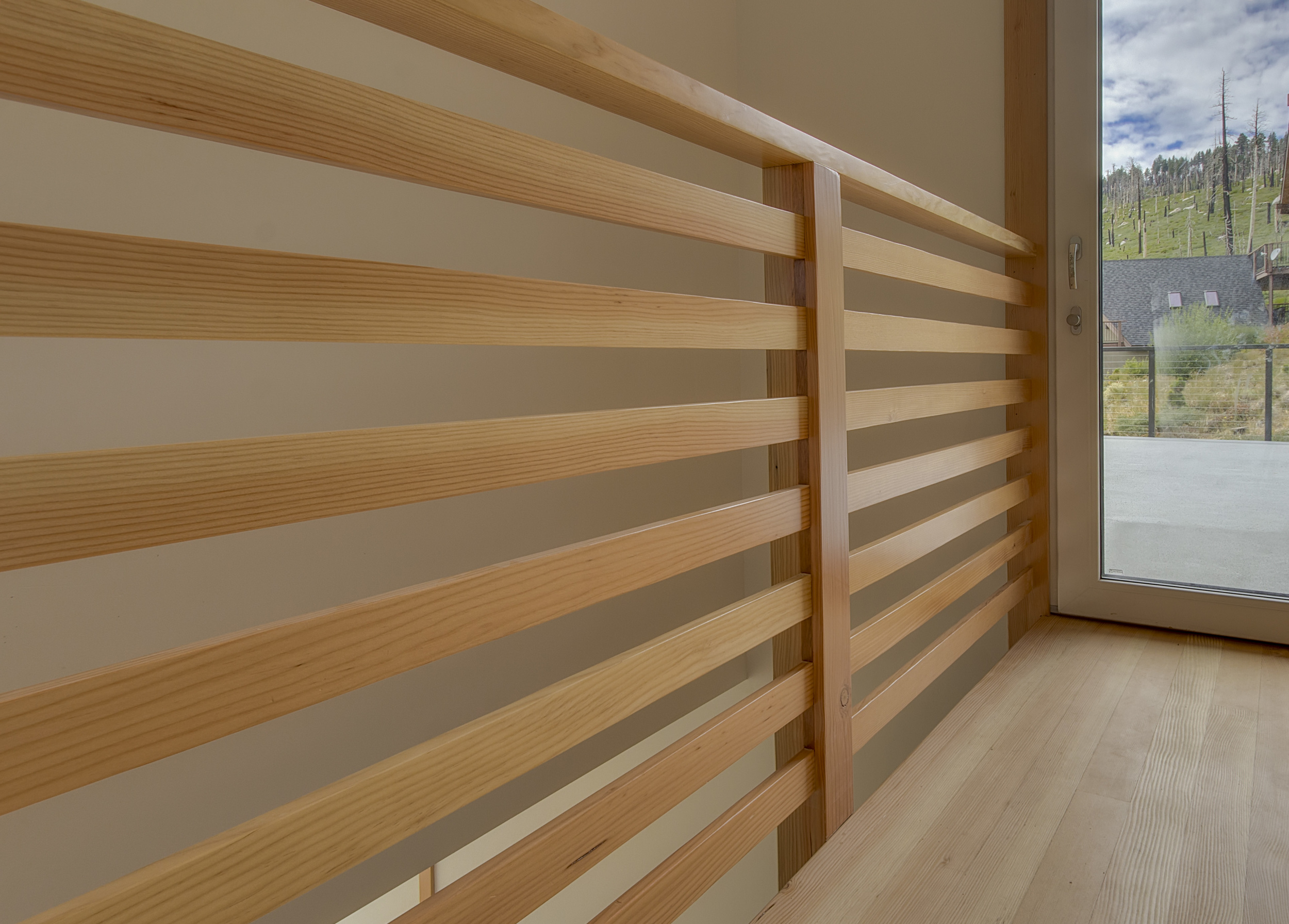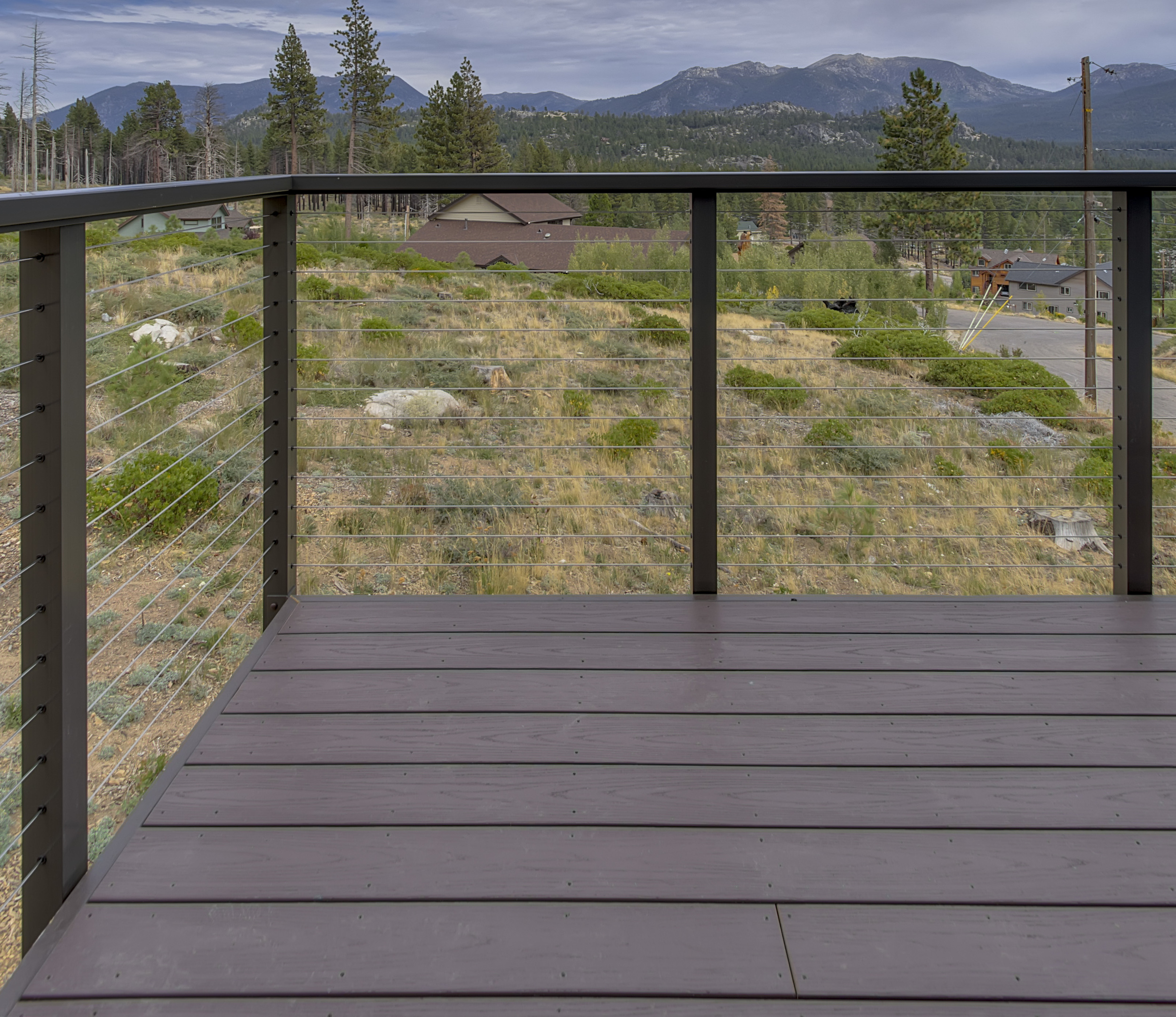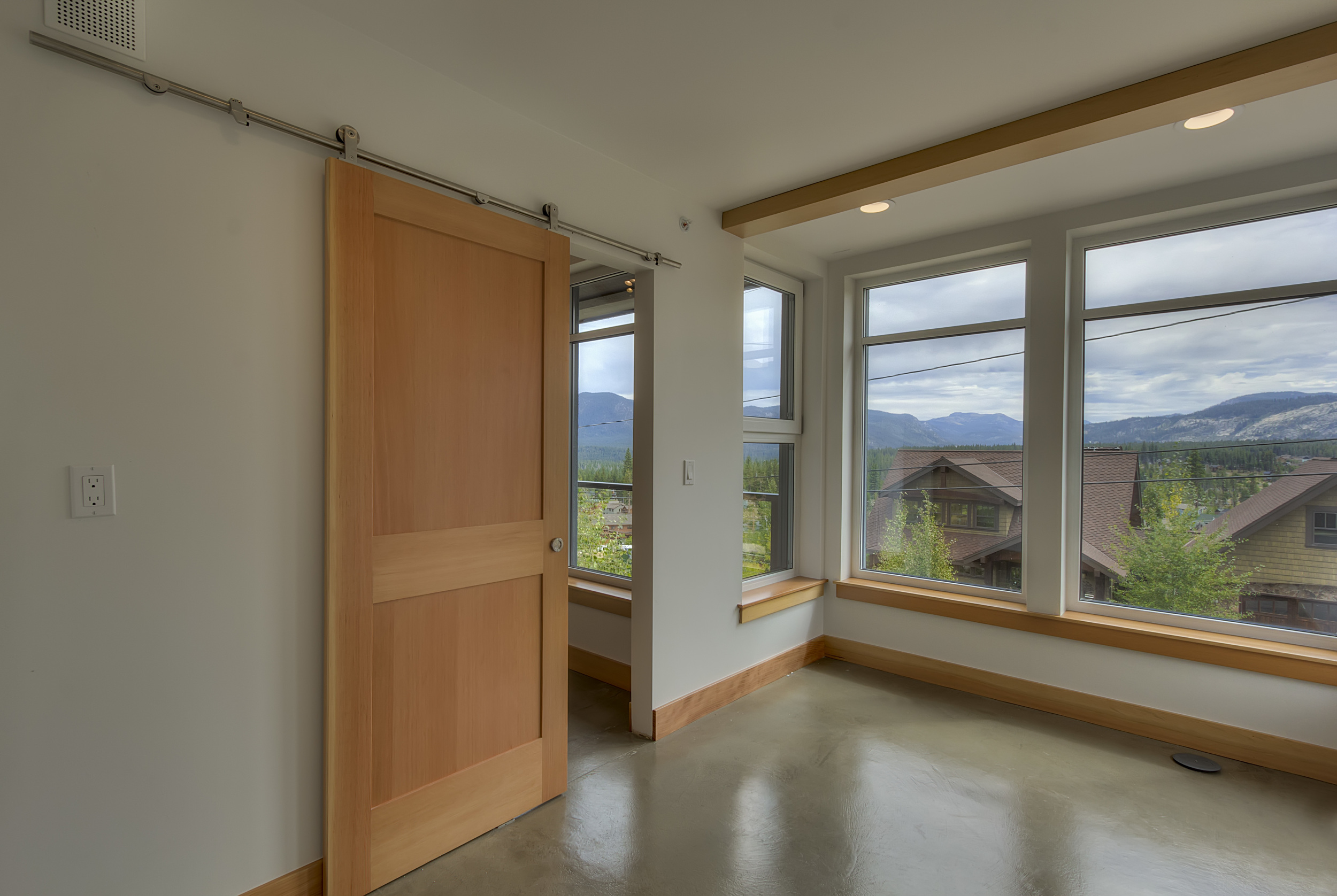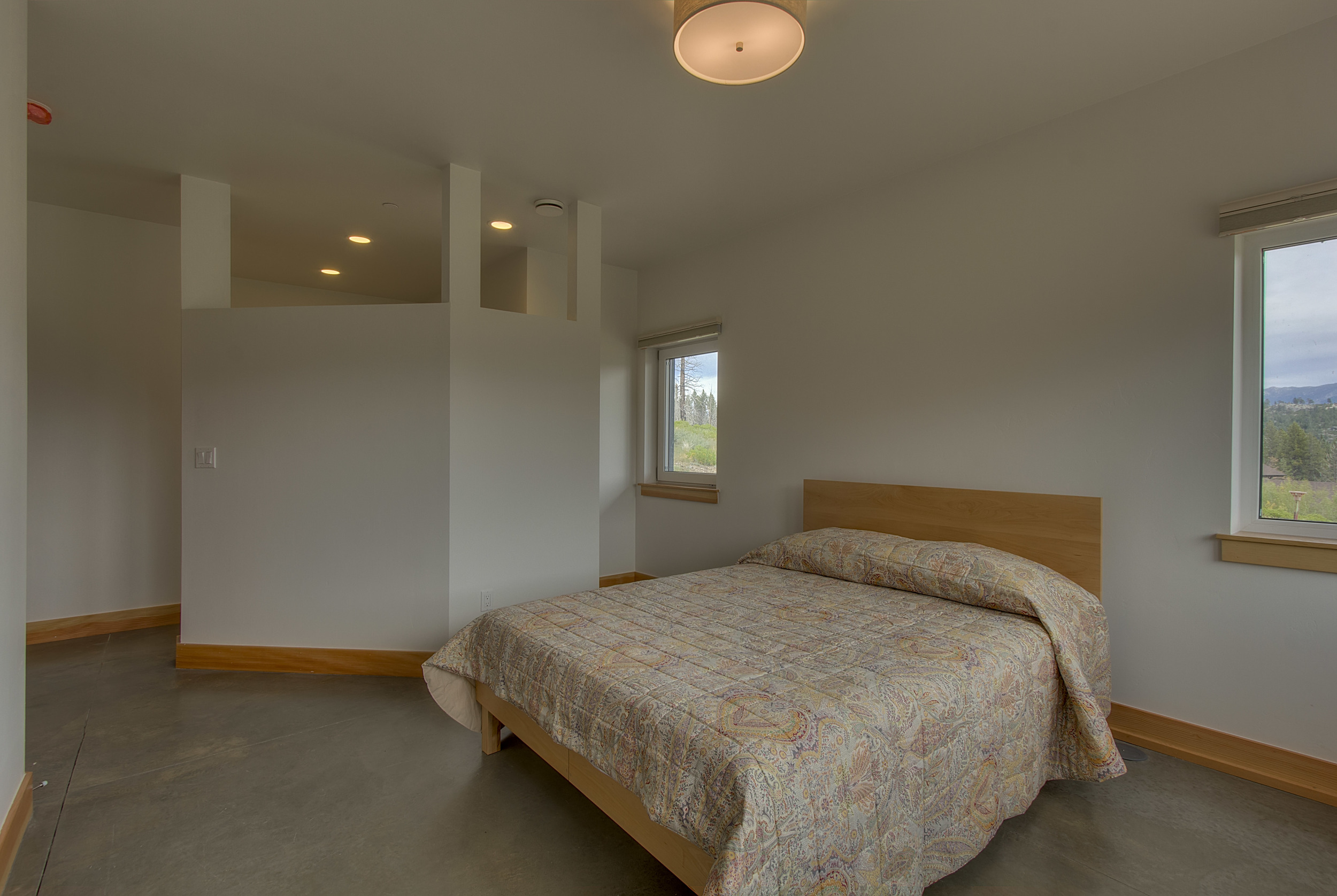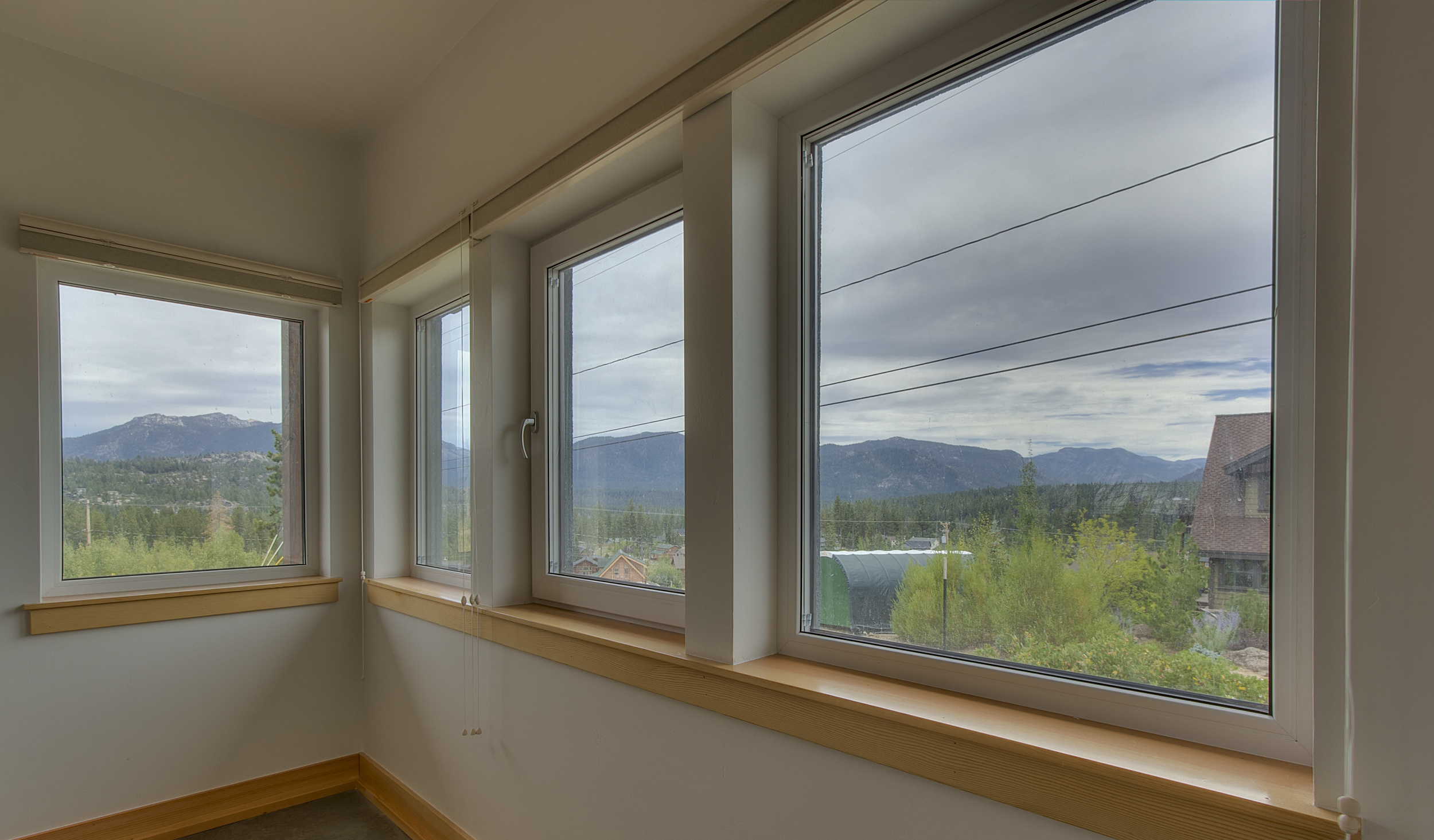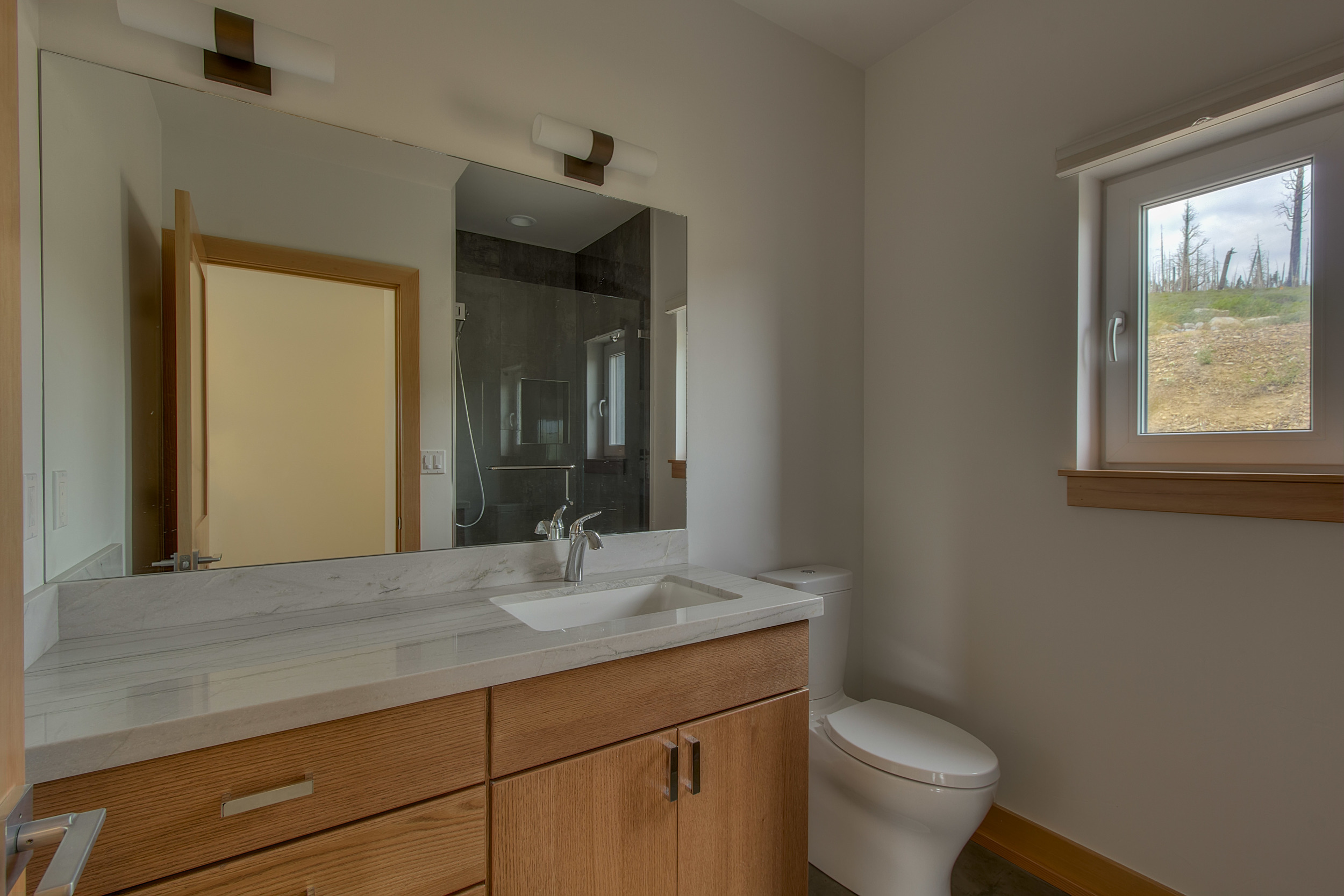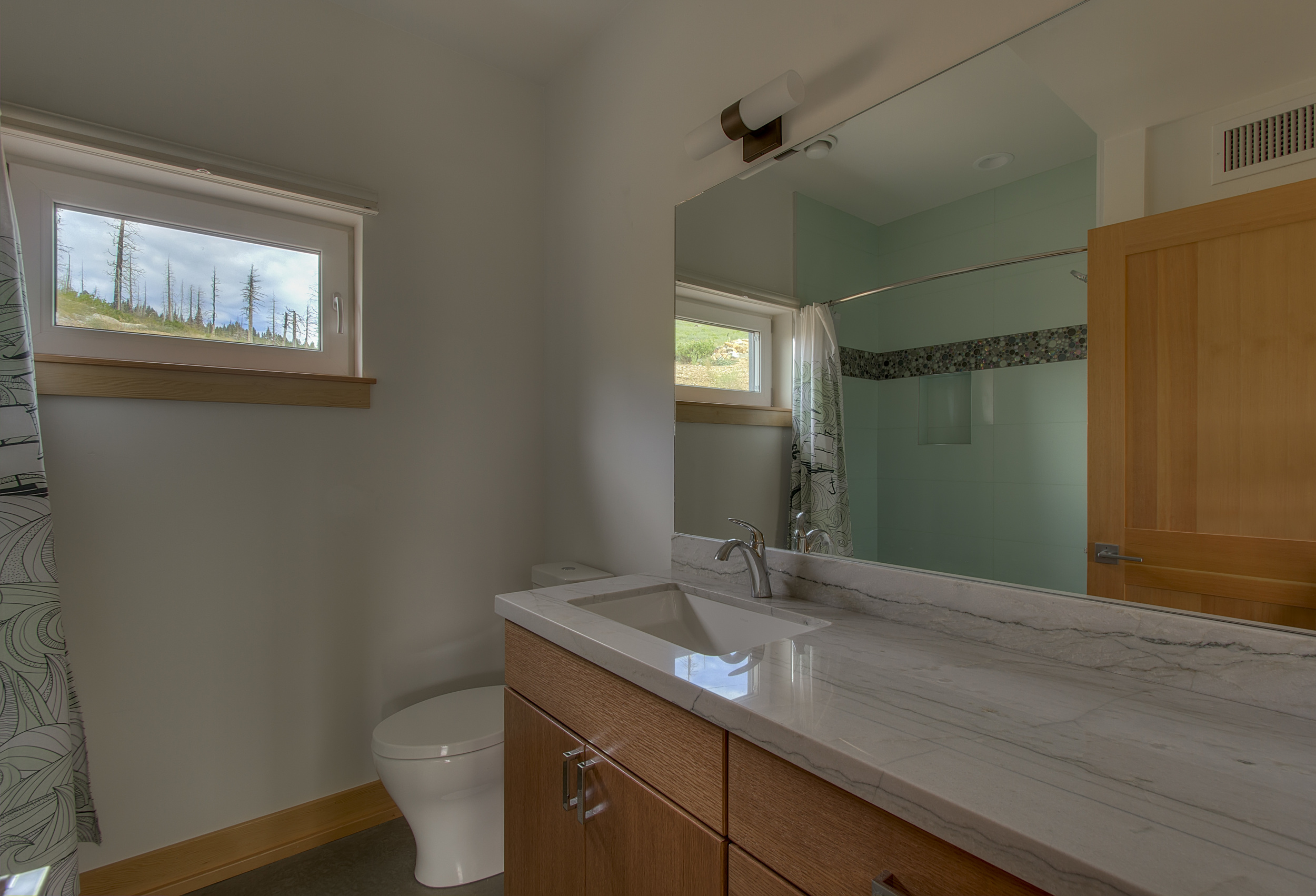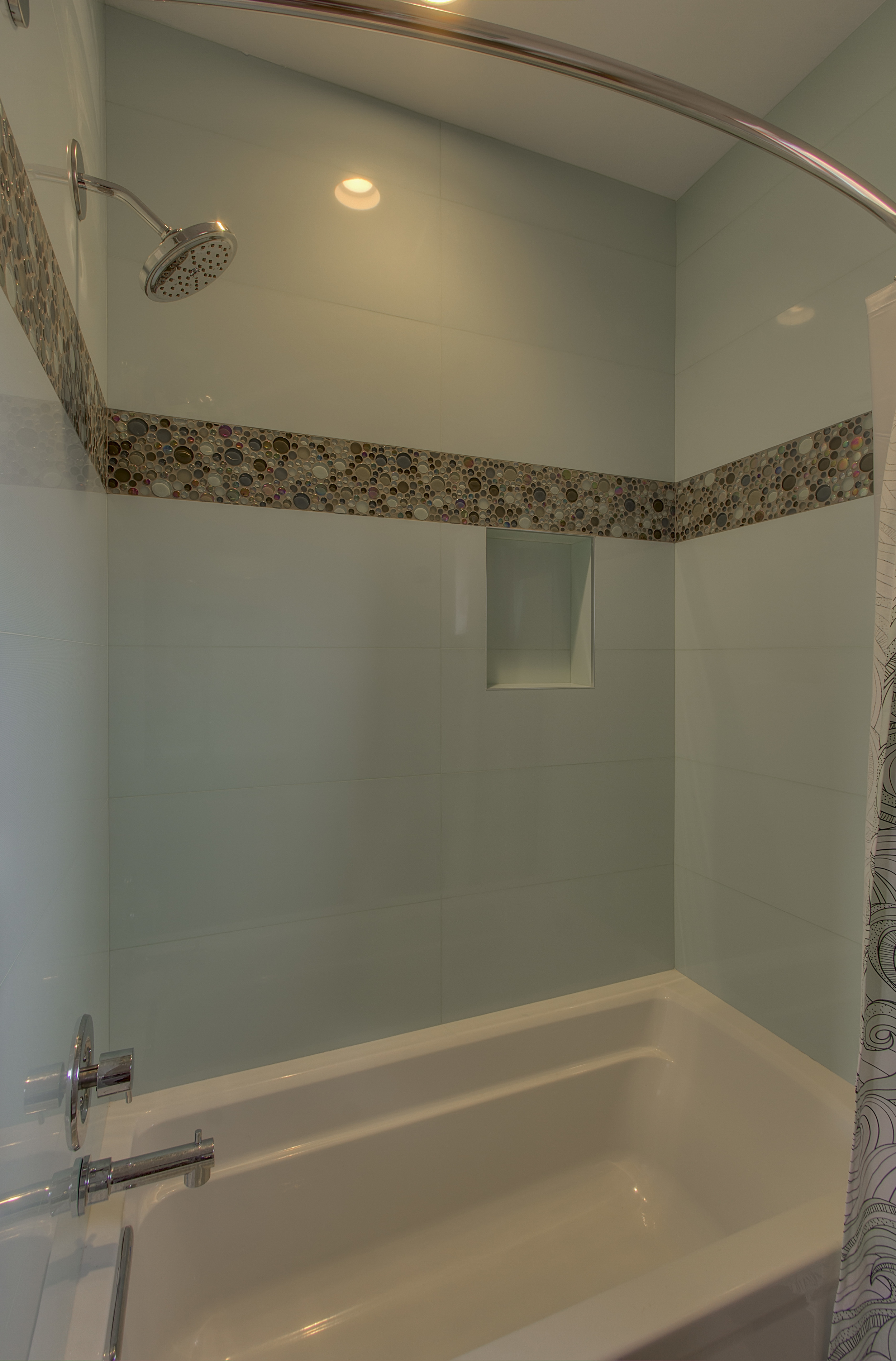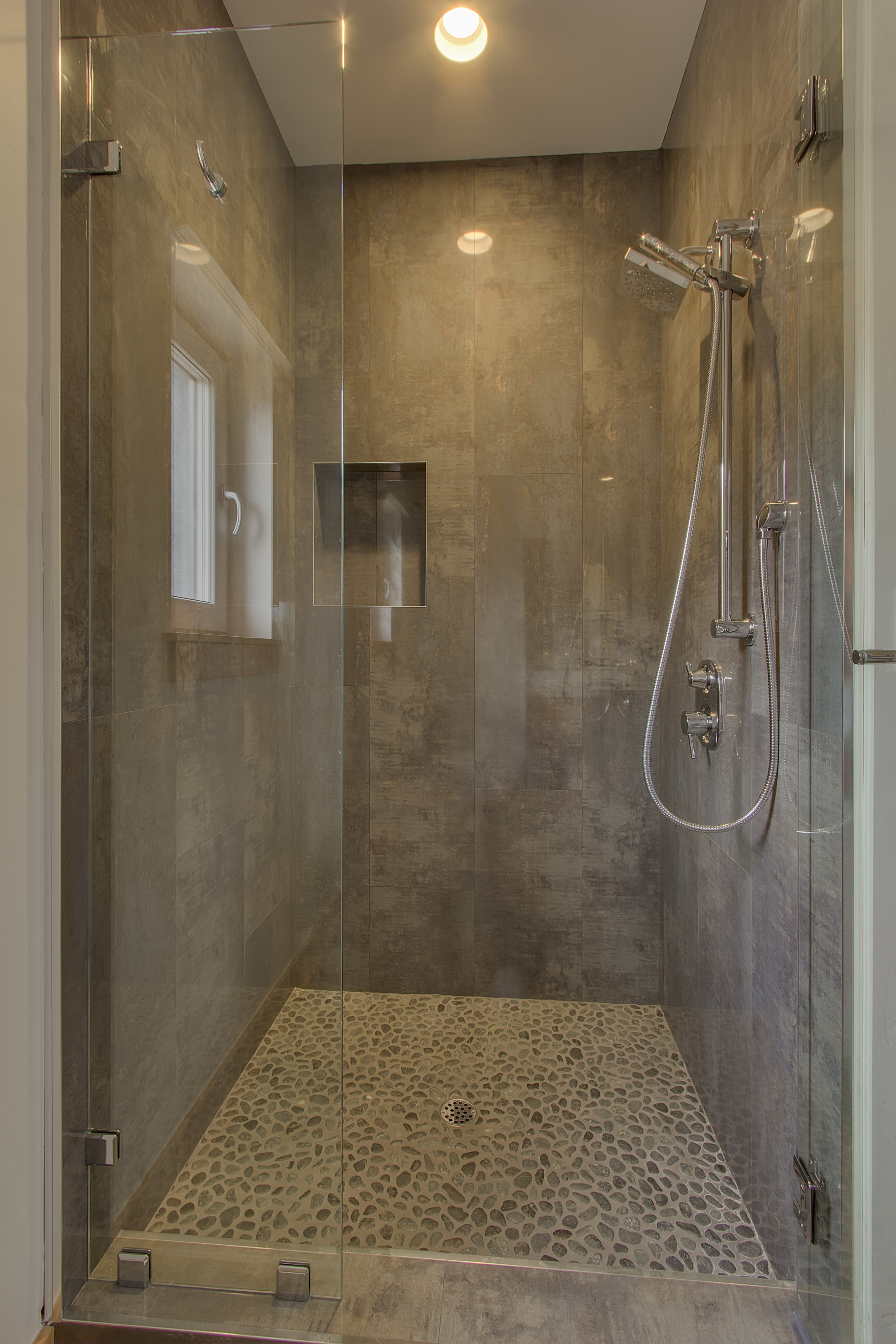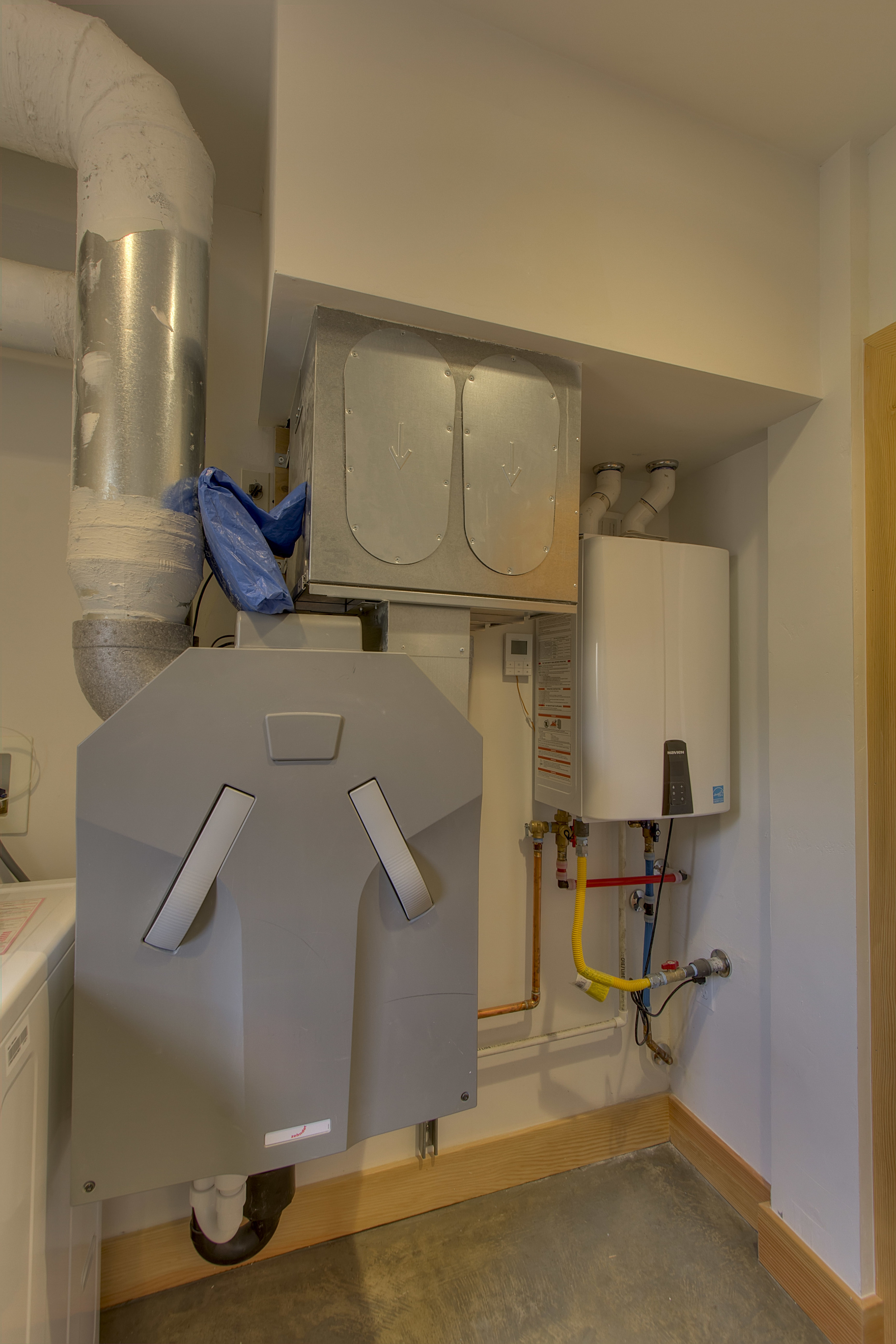Lookout
This home was designed and built to achieve Passive House certification (pending). This is a rigorous, objective standard to reduce energy use and the carbon footprint of buildings. The thresholds to meet PH standards have been developed in the field of building science.
Sierra Sustainable Builders built this clean, modern passive home from the ground up. We first insulated under the entire floor slab with 6” of EPS rigid insulation. The walls were primarily 8.5” SIPs (Structural Insulated Panels). Over these we installed a layer of 3” rigid insulation for a total of 11.5” of EPS insulation, R-42. To cap it off, the roof was a continuous layer of 12” SIPs, R-44. The framing design was optimized to eliminate structural thermal bridging wherever possible. To complete the envelope, we used Intus windows and doors, imported from Europe which had an average .12 u-value (R 8.3). (North American industry standard is u-value .33 or R 3.0)
The air barrier also originates below the slab as a 15 mil vapor barrier, sealed and taped to the perimeter and penetrations, ventilated by a passive radon vent. SIP panels are individually air tight but, where they are joined, there is potential for air movement. The walls were sealed with specialized building tape on the interior seams and over joints of dissimilar materials (concrete to wood). On the exterior, we supplemented the air barrier with a liquid applied vapor barrier over the SIP panels. For an effective air barrier, proper installation of the doors and windows is critical. After applying a liquid applied moisture barrier around any openings, we placed the windows toward the center of the wall line and intentionally left space for a ¼” bead of specialized “air dam” caulking to seal the unit into the opening. We then taped the seam between the wood frame of the house and the window frame, completing structure's efficient air seal.
To manage air quality, a Heat Recovery Ventilator was installed. The ventilator we chose operates at an incredible 84% efficiency. This unit efficiently heat exchanges outgoing air with incoming, then delivers it at a slow but constant rate to living areas, and removes air from the wet and odoriferous locations, such as the laundry, bathrooms, kitchen, creating a "clean-air" circulation throughout the home.
With belief the future points toward solar as the primary source for power, we emphasized the use of high efficiency electric appliances such as an induction range and condensing dryer. To supply heat, we chose electric mini split heat pumps, arguably the most efficient form of heat generation. The only gas appliance is a tank-less water heater. We pre-wired for PV solar on the south facing roof. Once the panels are installed, the potential is there for this home to completely offset energy from the grid.
The location of this project afforded generous potential for passive solar elements. Using available software, the design process involved modeling the solar exposure for all seasons. This passive design maximizes solar gains during winter and minimizes them during the summer, enabling the home to draw most of its heat from the sun. Combined with effective insulation and super efficient design, this home provides a space that is comfortable, aesthetic, and amazingly functional.
